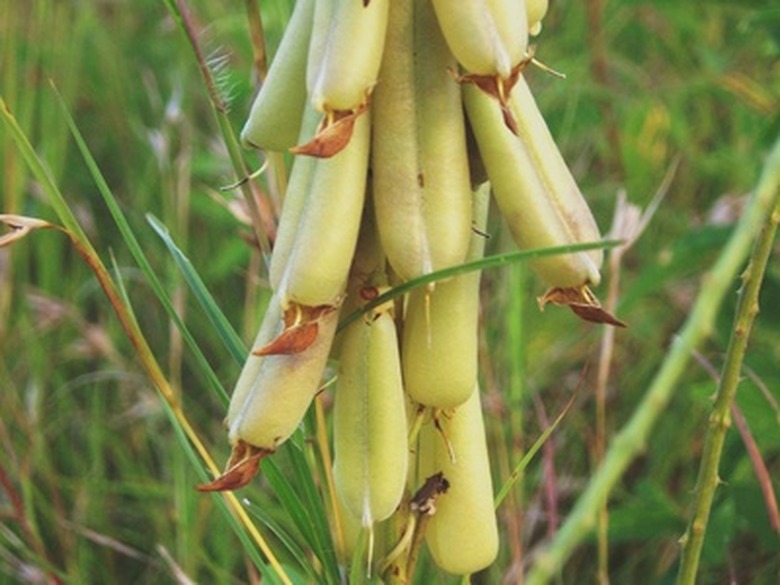How To Kill Flower Bulbs
Things Needed
- Post-emergent herbicide containing glyphosate
- Spray bottle
- Lawnmower
- Protective clothing
- Breathing protection
- Plastic dropcloth
Bulbs are flowers or plants that spring up yearly from seedlike packets in the ground. Once the flowers bloom, the foliage collects energy for the next year's growth. Bulbs typically reproduce by creating new offshoots each growing season. Some bulb plants, such as lily of the valley, wild onion or wild garlic, produce bulb offshoots at such a dramatic rate that the plant may become invasive. One solution for controlling invasive bulbs is to kill them.
Step 1
Wait for the bulb plant to emerge from the ground before treating it with a chemical herbicide. Pre-emergent herbicides will not kill bulb plants.
- Bulbs are flowers or plants that spring up yearly from seedlike packets in the ground.
- Some bulb plants, such as lily of the valley, wild onion or wild garlic, produce bulb offshoots at such a dramatic rate that the plant may become invasive.
Step 2
Select a pre-mixed systemic post-emergent herbicide containing glyphosate in a spray bottle to treat the flower bulb plants.
Step 3
Time the application of post-emergent herbicide once the plant sends out shoots. For lily of the valley, this will be in spring. Wild garlic and onion respond best in November.
Step 4
Mow the plants before treating them. Many bulb plants such as garlic or wild onion have thin, glossy leaves to which herbicides don't easily adhere. Mowing the plant creates a cut surface on which herbicides will cling.
- Select a pre-mixed systemic post-emergent herbicide containing glyphosate in a spray bottle to treat the flower bulb plants.
- Mowing the plant creates a cut surface on which herbicides will cling.
Step 5
Put on protective clothing including gloves, long sleeves, long pants and close-toed shoes before applying the herbicide. Wear a breathing mask to prevent inhaling the spray mist.
Step 6
Place a plastic dropcloth around the plant to prevent accidentally poisoning desirable surrounding grass or plants. Systemic herbicides are non-selective; they will kill anything they touch.
Step 7
Spray the herbicide over the stems and cut surfaces of the bulb plants.
Step 8
Watch the plants to determine if a second application of spray will be required. Wild garlic or onion may need a second application of spray in early spring before they can produce a second generation of bulbs in March.
- Put on protective clothing including gloves, long sleeves, long pants and close-toed shoes before applying the herbicide.
- Place a plastic dropcloth around the plant to prevent accidentally poisoning desirable surrounding grass or plants.
Step 9
Inspect the area where the bulbs grew twice yearly, in early spring and late fall, for the next four to six years to determine if the bulb plants are returning. Treat the bulbs as the plants emerge. Some persistent bulbs such as wild garlic may need continual treatment for up to six years to completely kill the plants.
Tip
Mowing bulb plants will not kill them but will weaken the bulbs and prevent them from collecting energy.
Warning
Hand-pulling bulb plants will remove some bulbs but will not always remove every bulb. Some bulb plants break at the soil line and leave the bulb behind. Plants usually return on the bulbs left behind.
